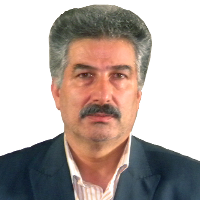Participatory system dynamics modeling for groundwater resources management (Case study: Marand Plain, Iran)
The capacity of groundwater systems to offer various services depends on their geographically varying properties and is dynamically influenced by ongoing natural and human processes. Because groundwater is often perceived as a private resource (closely connected to land ownership, and in some jurisdictions treated as privately owned), regulation and top–down governance and management are difficult. Governments need to fully assume their role as resource custodians given the common-good aspects of groundwater. The participatory modeling approach included several stakeholder groups from groundwater users, policymakers, environmental groups, and other organizations involved in groundwater management. The scarcity of water resources and ever-increasing demand for these vital resources require identification, quantification, and management of groundwater in a way that prevents overexploitation and consequent economic and environmental damage while satisfying the demand for water from competing sectors. Participatory groundwater management is envisaged to take a significant step in groundwater management at the grassroots level to enable the community and stakeholders to monitor and manage the groundwater as a common pool resource themselves.
Marand Plain located in East Azarbaijan province, Iran. There are 502 agricultural wells in the Marand Plain, which are used by 16,000 farmers for agriculture. The total volume of consumed water is 226.82 mm3 and 191.66 mm3 of it is supplied from underground water sources. The participatory system dynamics modeling process includes five main steps: 1- Identifying the problem through participatory workshops: it aims at collectively defining the problem to be solved and the objectives of the model. 2- Formulating a dynamic hypothesis to explain the causes of the problem, leads to the development of a conceptual model or causal loop diagram. 3- Formulation of a system dynamics quantitative simulation model. This step includes the development of decision rules, the quantification of variables, building the stock and flow diagram, and model calibration using parameters to define initial conditions. 4- Ensuring the model is appropriate for the task through model validation. 5- Formulation of potential strategies and the evaluation of the simulated results. It requires the identification of scenarios, i.e., alternative strategies, and the analysis and discussion of the simulated results generated by the model for each scenario over time.
The problem statement was created in a qualitative way using the focus group discussion (FGD) method. The key variables of the system (61 variables), the system boundary (including the internal and external variables of closed loops), and the modeling period (20 years) were defined. For formulating the dynamic hypothesis, 9 CLDs were obtained. In the third step, developing the simulation model, all mathematical relationships, behavioral functions, and differential equations were formulated in the form of a stock and flow diagram (SFD). In the fourth step, model reliability tests were conducted in three categories: structural test (including structure verification test and limit condition test), behavioral test (including reference behavior reconstruction test), and sensitivity analysis test. Also, the stakeholders’ feedback test was conducted in a mixed method (quantitative-qualitative). In the policy design and analysis stage, the five general actions in the participatory management of groundwater resources in the Marand Plain, including modifying the cultivation pattern, increasing the irrigation efficiency by implementing modern irrigation networks, decentralizing the water governance and management, creating public institutions for water management (rural production cooperatives), water supply from outside the basin (transfer from the Aras River), were obtained. These actions have the greatest effect on the Marand Plain aquifer reservoir deficit.
The results of our participatory system dynamics simulation show that the balance and restoration of the aquifer are mostly affected by the "reform of the decision-making structure in the governance of groundwater" in the form of institutionalization (empowered farmers association) and decentralization of water management. Other adopted policies will be effective only if these components are present. To get out of the vicious cycle of short-term and unstable policies and decisions in the field of groundwater, fundamental reforms should be made in the structure of governance and groundwater management, and fully equal opportunities should be provided for local communities to participate effectively in the decision-making process. Also, if the process of implementation of laws and decisions is done through the channel of associations of the local community, they will have more executive support. Improving the water use behavior of farmers is the consequence and output of changing the structure and processes of groundwater management and governance.
- حق عضویت دریافتی صرف حمایت از نشریات عضو و نگهداری، تکمیل و توسعه مگیران میشود.
- پرداخت حق اشتراک و دانلود مقالات اجازه بازنشر آن در سایر رسانههای چاپی و دیجیتال را به کاربر نمیدهد.


